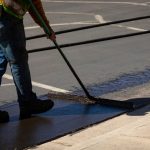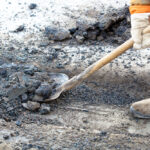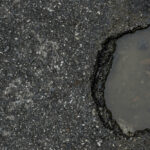
How to Determine when Patching or Saw Cutting Is the Best Option for Your Asphalt
Asphalt surfaces are a vital part of the infrastructure in Memphis and across the country, forming the backbone of our roads, driveways, and parking lots. Like any durable material, asphalt is subject to wear and tear over time due to traffic, weather conditions, and other environmental factors. When cracks, potholes, or surface degradation appear, property owners and facility managers face a crucial decision: should they patch the damaged area or opt for saw cutting to remove and replace the section entirely?
Understanding when patching or saw cutting is the most effective and cost-efficient method for asphalt repair can extend the life of your pavement, enhance safety, and maintain a professional appearance. This guide dives deep into both methods, offering insights tailored to those navigating asphalt maintenance decisions in Memphis.
The Basics of Asphalt Patching
Asphalt patching is a common repair technique used when localized surface damage—such as potholes, cracks, or surface fatigue—occurs. It’s favored for being quick, cost-effective, and minimally disruptive.
Patching involves removing loose debris from the damaged area, applying a bonding agent if necessary, and pouring new asphalt mix to fill the void. Once compacted and cured, the patched surface can often be driven on the same day. This is ideal for Memphis property owners seeking a fast solution to maintain their parking lots or driveways without extended closures.
However, patching has its limitations. While it addresses the surface issue, it doesn’t resolve underlying structural problems. If the damage is caused by foundational issues—like subbase failure or drainage problems—the patch may serve as only a temporary fix. Over time, repeated patching in the same area can lead to a patchwork effect that not only looks unappealing but also compromises the structural integrity of the pavement.
Therefore, patching is most effective when the damage is superficial and isolated, and when the surrounding asphalt remains in good condition.
The Role of Saw Cutting in Asphalt Paving
Saw cutting, in contrast, is a more extensive but longer-lasting solution to asphalt damage. This method involves using specialized saws to precisely cut and remove the damaged section of pavement. The underlying subbase is then inspected and repaired if needed before new asphalt is laid and compacted.
Saw cutting is particularly beneficial when damage extends beyond the surface or recurs frequently in the same area. For example, alligator cracking (a web of interconnected cracks resembling an alligator’s skin) usually indicates foundational issues. Simply patching over such damage is unlikely to yield lasting results. In these cases, saw cutting enables a more comprehensive repair by addressing the root cause of the problem.
In Memphis, where the climate swings from freezing winters to hot, humid summers, thermal expansion and contraction can exacerbate existing pavement flaws. Saw cutting allows for a clean, structurally sound repair that can better withstand these conditions.
While this method involves higher upfront costs and longer project timelines compared to patching, it often proves more economical in the long run. Property owners avoid repeated repairs, extend the pavement’s lifespan, and benefit from a more uniform appearance.
How to Choose Between Patching and Saw Cutting
Choosing the best method depends on several factors including the extent and cause of the damage, the age of the asphalt, budget constraints, and future use of the surface.
If the damage is confined to a small, superficial area and the pavement is relatively new and structurally sound, patching is often sufficient. This is particularly true for driveways or low-traffic areas where cosmetic imperfections are more acceptable, and performance demands are lower.
On the other hand, if the damage is deep, recurrent, or widespread—or if the asphalt has reached the end of its service life—saw cutting is the better option. Commercial lots in Memphis that experience high traffic volumes, heavy vehicle loads, or water drainage issues will benefit more from the durability and strength that saw cutting repairs provide.
It’s also important to consider the visual outcome. Patching often results in noticeable contrast between the new material and the existing surface, which may detract from the property’s appearance. Saw cutting enables cleaner lines and smoother blending, which is essential for businesses concerned with curb appeal.
Professional assessment is key. Engaging with a Memphis-based asphalt paving expert ensures that the root cause of the damage is identified and that the recommended repair method aligns with both short-term needs and long-term maintenance goals.
Cost Considerations and Long-Term Value
Asphalt maintenance decisions often come down to cost—and understandably so. Patching is generally more affordable upfront. It’s less labor-intensive, requires fewer materials, and can often be completed within a few hours. For budget-conscious property owners or urgent fixes, patching provides an attractive option.
However, the lower initial cost can be misleading if the underlying problem remains unresolved. Repeated patching in the same area can lead to escalating maintenance expenses. In such scenarios, saw cutting—though more expensive at the outset—provides a higher return on investment by offering a longer-lasting solution with fewer follow-up repairs.
In Memphis, where local weather and traffic patterns can accelerate pavement deterioration, investing in the right solution early can prevent expensive overhauls later. Additionally, well-maintained pavement enhances property value, improves safety, and reduces liability risks—especially in commercial settings where pedestrian and vehicular traffic is constant.
Working with a knowledgeable asphalt paving company in Memphis can help you weigh these financial considerations effectively. They can offer a comprehensive inspection, identify root causes, and provide a detailed cost-benefit analysis for patching versus saw cutting.
Partnering with Memphis Asphalt Experts for Reliable Maintenance
Whether you choose patching or saw cutting, the success of your asphalt maintenance plan largely depends on the quality of workmanship. Poor installation, insufficient compaction, or failure to address subbase issues can lead to rapid deterioration—regardless of the repair method used.
Memphis is home to many experienced asphalt paving companies that specialize in both residential and commercial projects. These professionals understand the region’s climate, soil composition, and traffic patterns, all of which inform their repair recommendations. They can help determine whether a quick patch will suffice, or if saw cutting and a full-depth repair are warranted.
Establishing a long-term relationship with an asphalt maintenance provider in Memphis also ensures consistent quality. Regular inspections, scheduled maintenance, and timely interventions can dramatically extend the life of your pavement. By addressing small issues before they escalate, property owners can maintain safe and visually appealing surfaces year-round.
In addition to patching and saw cutting, a holistic approach to asphalt maintenance should include sealcoating, crack filling, and proper drainage design. These complementary services protect the surface from moisture penetration, UV rays, and chemical exposure—all major contributors to asphalt degradation.
By integrating these strategies with well-timed repairs, Memphis property owners can achieve a balance of cost-efficiency, durability, and curb appeal that enhances their investment for years to come.
Conclusion
Both patching and saw cutting have their rightful place in asphalt maintenance. The key to choosing the right approach lies in understanding the extent and nature of the damage, considering long-term costs, and partnering with experienced paving professionals in Memphis. Whether your goal is a quick fix or a comprehensive repair, making informed decisions will help preserve the integrity and value of your asphalt surfaces well into the future.
Got Questions? Let Us Help!
More...
Categorised in: Asphalt Paving




